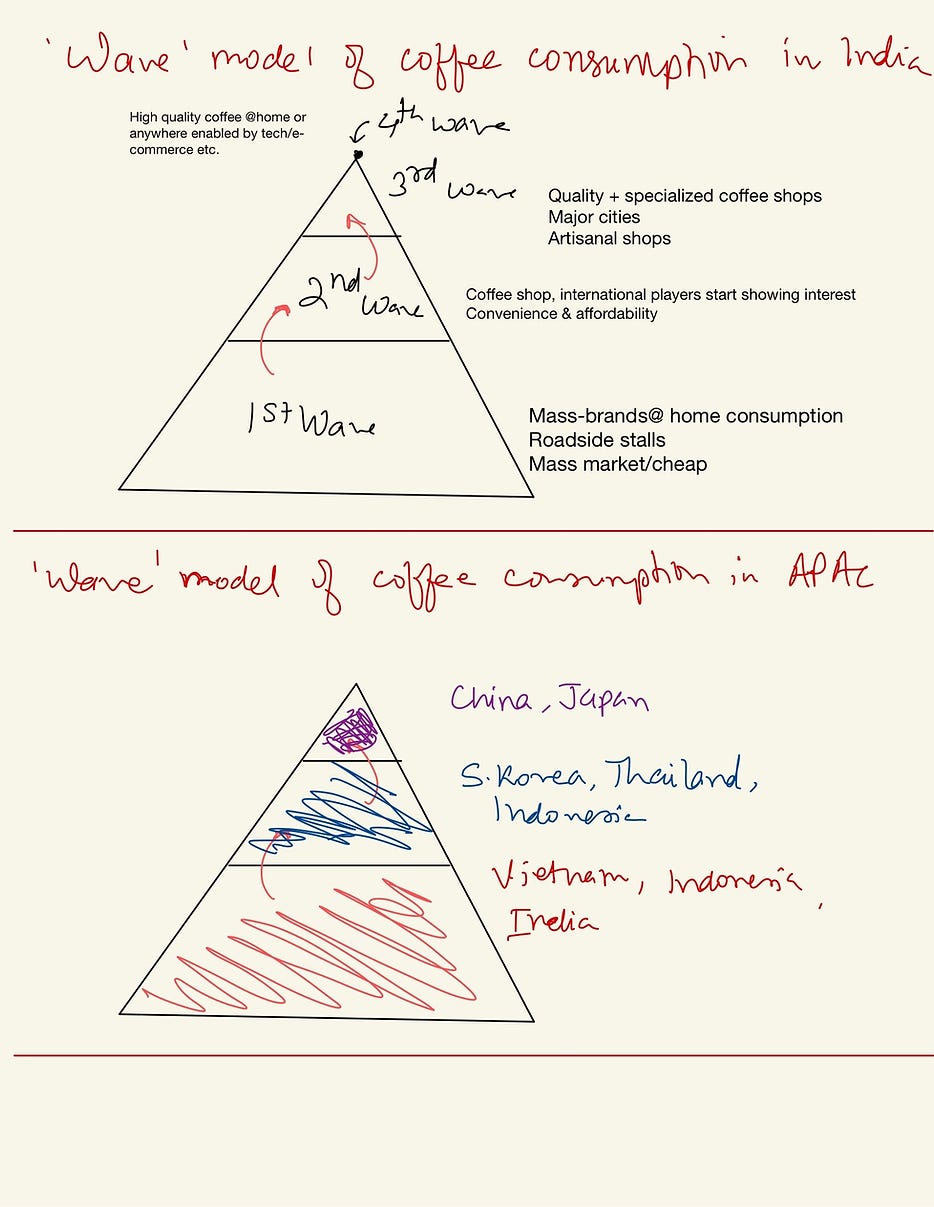Indias and Indians
It is not difficult to come across people pontificating on the complexities of this great wonderful land we call India, of the existence of many Indias in India - in interviews, speeches, essays, comedy specials, podcasts, film songs, and dialogues.
The most common way of classifying India in the marketing verse is the NCCS or the New Consumer Classification System. Developed by the Market Research Society of India (MRSI) and Media Research Users Council (MRUC), it classifies the approximately 319 million Indian households on two variables - education of the chief wage earner (the individual that contributes the most to household expenditure) and the number of consumer durables owned by the household from a predefined list.
Here is a pretty succinct explanation of the old and new classification systems - read the full article for some more interesting reads about the complexity of defining middle classes and another popular way of segmenting Indians (that old India - I, II, III system - that is most famous in the startup/investing circles).
This debate/dilemma mirrors that which exists in other parts of the world about ‘generations’ - millennials do this, and Gen-Z does that.
Oh, BTW - I find it extremely amusing that in our classes, we use the words ‘Indians,’ ‘population,’ ‘target audience,’ ‘TG,’ ‘people,’ and ‘audience’ to mean ‘consumer.’ It is almost as if, in addition to bipedalism, language, and tool use, CONSUMPTION is what really makes us human.
Just for some context, I study marketing at a post-graduate level with a specialisation in Media & Entertainment Management, and this non-rigorous segmentation system came up in a class about sectoral trends.
There are three Indias according to this classification. Of the ~300 Mn households (HHs), 30 Mn live in what we can dub ‘America’, 70-80 Mn HHs live in ‘Indonesia’, and the rest live in ‘Africa’. It is a little callous and not the most politically correct, but I found it a useful way to think about the country. People like me live in what the professor dubbed LA, right at the tippy-top (the professor was the first to accept that he belonged to LA, perhaps even the nicest part of LA).
What made him optimistic about the future of this country is that by his reading of long-term macro indicators, Indonesia is fattening, and so is America. This means, more consumers in Indonesia and more consumers who consume a lot in America. Which means (hopefully) a better-paying job for me.
Besides being an India optimist, this guy was a TV optimist. His reading (and mind you, his analysis and opinion carry a lot of weight) was that, as incomes in Africa rise, they will first purchase a TV set and a Free Dish
If you don't know what Free Dish is .... click here
Free Dish, if y’all don’t know, is Prasar Bharati’s Free DTH service operated by the public service broadcaster - Prasar Bharati. There is no subscription fee; you only need to pay once to buy a dish and a Set Top Box (STB), which will only cost you ~INR 2,000. You get some 200+ channels, and broadcasters are paying an arm and a leg to be available for free on Free Dish. Just to get in front of that next billion consumers - and sell ad space to soap brands and ed-tech companies. And Prasar Bharati is making a killing at auctions. So that’s more money in the bank for the government. Good!
It is possible that Africa leapfrogs TVs and jump straight to smartphones, the same way we leapfrogged pagers, went straight to phones, and skipped the PC revolution for the smartphone revolution. But for that to happen, smartphones will have to get cheaper, and that too quickly. Comparing prices for a TV and a smartphone (or even second-hand TVs and second-hand smartphones) directly is unfair. TV often makes more sense as it is a viable entertainment solution for an entire family and not just for one person, who might take the smartphone with them when they go out.
We can only wait to find out :)
Other frameworks can also be overlaid easily on-to this three-tier system, except the number of people in each section would vary slightly. For example, the wave model of coffee cultures,


